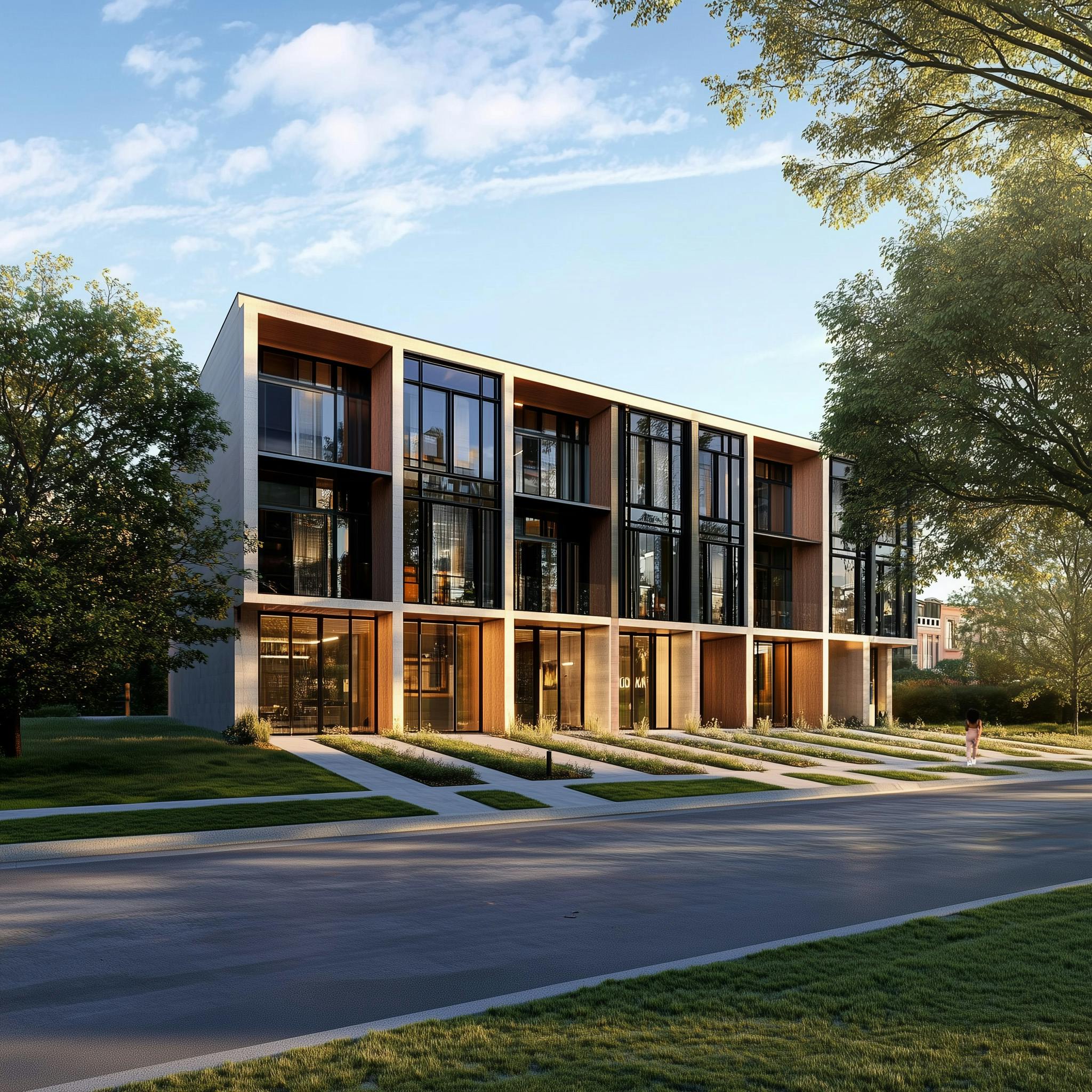
AI-Powered Residential Architecture Accelerates Affordable Housing
Ralph David Abernathy Infill
Atlanta, GA
This 16-unit rowhouse development compresses design timelines by 60% using AI: cutting costs, reducing risk, and delivering walkable, net-zero-ready homes near the BeltLine. Designed for workforce buyers and first-time homeowners, it balances financial discipline with architectural quality. A fast-moving, replicable model for high-impact infill.
In Atlanta’s West End, the Ralph David Abernathy Infill affordable housing residential architecture project showcases how AI in architecture can unlock high-performing urban housing with unmatched speed and precision. Designed by cove, a full-service AI-powered architecture firm, this 16-unit rowhouse development compresses timelines, minimizes redesign costs, and delivers a financially viable model for compact infill.
Using Vitras.ai, cove’s proprietary AI system, the team completed site feasibility, cost modeling, and entitlement-ready documentation in a matter of days, cutting design time by over 60%. AI simulations guided unit sizing and site massing within tight zoning constraints, helping lock in early cost certainty and avoid value-engineering cycles.
Each unit is net-zero-ready, built with durable materials, solar infrastructure, and integrated smart technologies to reduce long-term operating costs. Proximity to the Atlanta BeltLine boosts walkability and market appeal while aligning with local development priorities.
For developers, this project delivers more than efficient housing, it’s a replicable strategy for infill success. By leveraging AI in architecture, this compact project demonstrates how today’s residential architects can deliver faster approvals, stronger financials, and ESG-aligned housing that’s ready to scale.